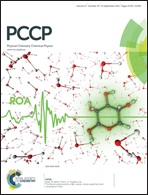Low temperature catalytic oxidative aging of LDPE films in response to heat excitation
Abstract
The waste treatment of polymer materials is often conducted using the photocatalytic technique; however, complete decomposition is frequently inhibited owing to several shortcomings such as low quantum yield and the requirement of ultraviolet irradiation. Herein, we report a strategy to implement moderate management of polymeric films via thermocatalytic oxidative route, which is responsive to heat stimulus. Diverse LDPE-matrix films together with as-prepared thermal catalysts (TCs) or initiators were synthesized to further investigate heat-dependent-catalytic degradation effects. After artificial ageing, structural textures of the as-synthesized films could be chemically deteriorated, followed by a huge increase in surface roughness values, and appreciable loss was also found in the average molecular weights and mechanical parameters. We found an emergent phenomenon in which crystallization closely resembled two-dimensional (2D) growth, which displayed rod-like or disc-type crystal shapes. New chemical groups generated on film surfaces were monitored, and led to a higher limiting oxygen index because of strong catalytic oxidation, thus demonstrating the success of catalytic oxidative ageing by heat actuation. The underlying mechanism responsible for thermocatalytic oxidative pattern is also discussed. Accordingly, these findings may have important implications for better understanding the development of polymeric-matrix waste disposal.


 Please wait while we load your content...
Please wait while we load your content...